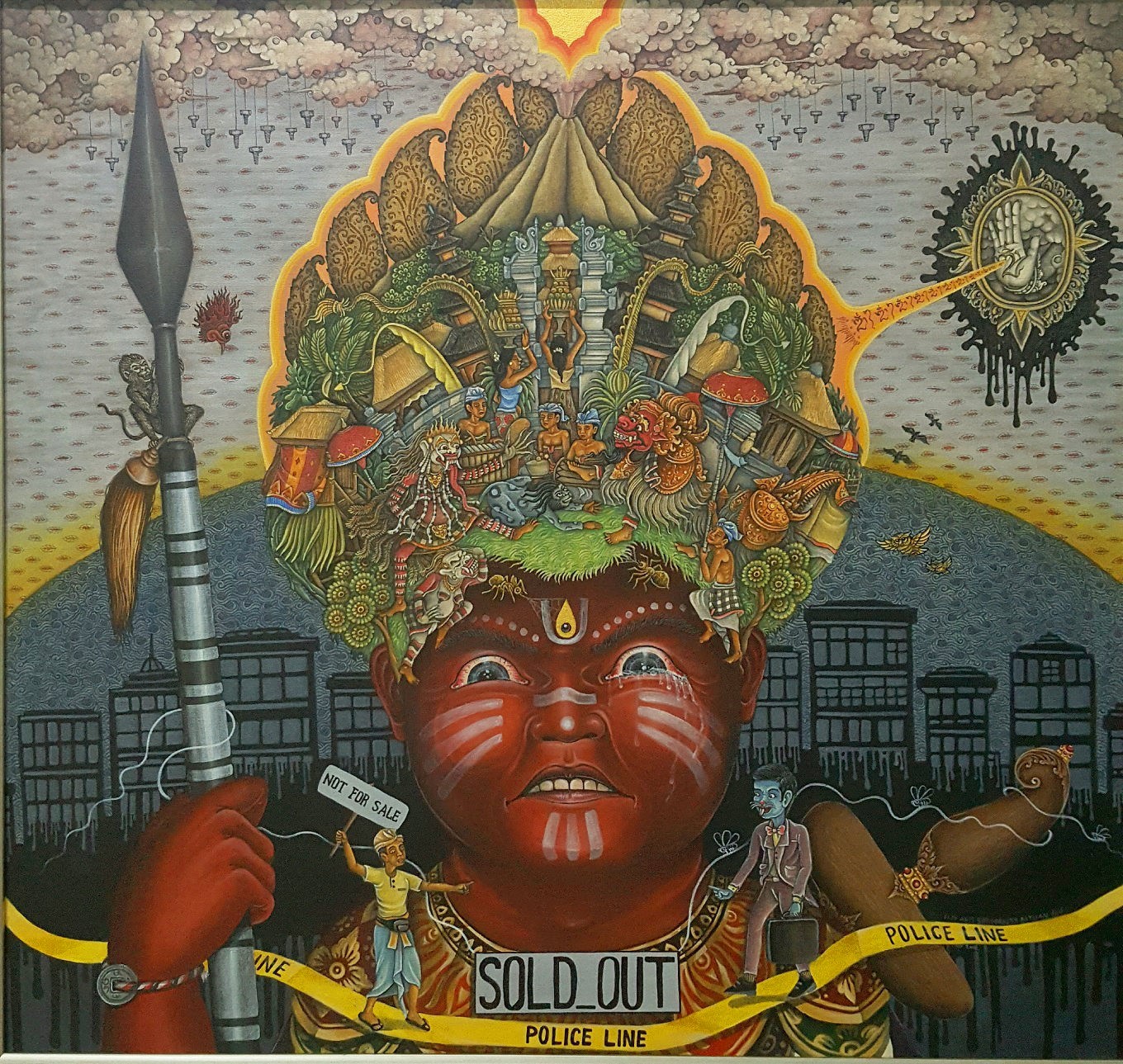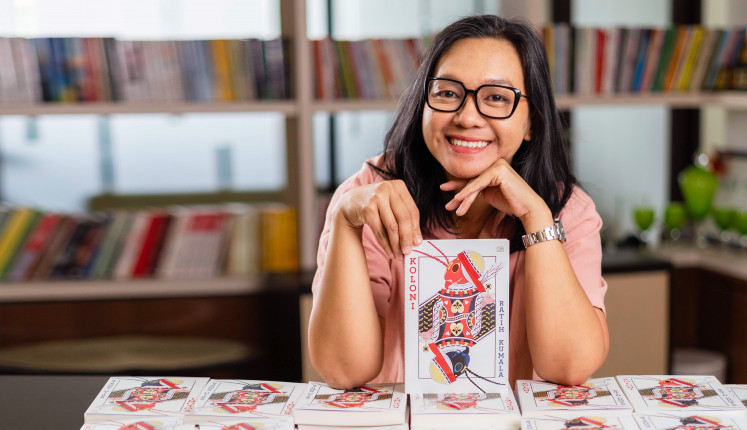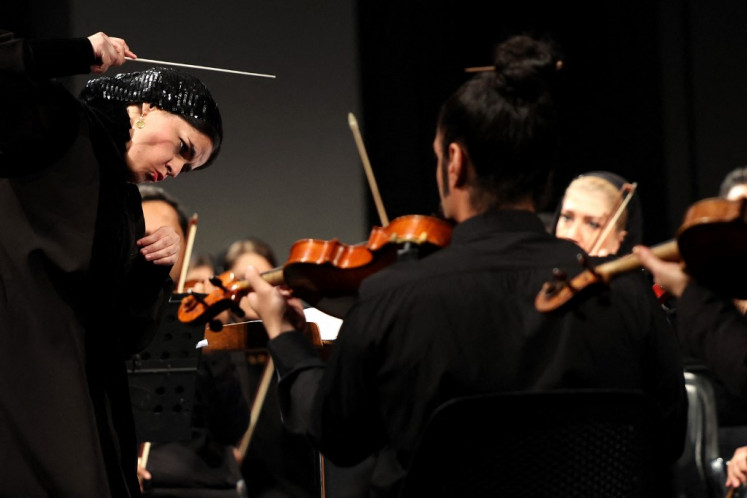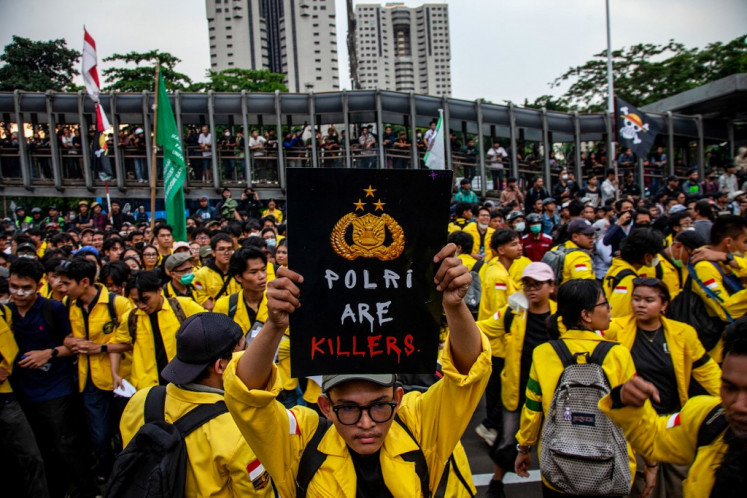Popular Reads
Top Results
Can't find what you're looking for?
View all search resultsPopular Reads
Top Results
Can't find what you're looking for?
View all search results‘Rebirth’ shows promise of youngest Titian Prize finalist
The most extraordinary works of Balinese traditional art occur while the artist is still young, when they have a sense of freedom and time on their hands.
Change text size
Gift Premium Articles
to Anyone
T
he genre of Batuan painting has a unique story within the annals of Balinese art, and is recognized with a special esteem. Enduring the ever-changing socio-political, economic climates that shaped the island during the past 90 years, the style has evolved, undergoing notable transformations.
The golden era was its infancy. During the 1930s, the Batuan “school” was defined by its own unique character, setting it apart from painting developments in Ubud at the time. Often dark and moody sketches in black ink, the compositions were generally dense and crowded, the white paper and canvas set against the compositions’ deeply saturated tones created eye-catching contrasts.
During the 1970s the style was revolutionized; the works became larger, detailed, dynamic and colorful, highlighted by universal themes. Painters I Made Budi (1943-2016) and I Wayan Bendi were the innovators, responsible for stylistic developments that gave the genre international recognition. The second decade of the new millennium has revealed fresh young talent, the fore bringers of another exciting chapter in Batuan painting.
History reveals that generally, the most extraordinary works of Balinese traditional art occur while the artist is still young, when they have a sense of freedom and time on their hands. After marriage, family and cultural commitments take priority. There are also the pressures from the art world — collectors, dealers, gallerists and the money mechanism of market forces.
At 22 years of age, I Wayan Aris Sarmanta was the youngest finalist in the 2017 TiTian Prize, an award that honors talent in all genres of Balinese visual art. While his first major group exhibition was in 2013 in Ubud, it was his masterwork Pohon Kehidupan (Tree of Life), painted in 2015, that truly captured local art observers’ attention.
Opened on May 13 at TiTian Art Space Ubud, REBIRTH, Sarmanta’s premiere solo exhibition, showcases his remarkable skills that are a continuation of the tradition of storytelling — the historical fundamental that defines Balinese art. The artist presents nine paintings rich in symbolic meaning, complete with an array of cultural icons that are some of the major visual features. His themes range from the light-hearted to serious, with some works bearing social and political references.
Sarmanta explores a full gamut of colors outside of cultural conventions. He discovers hues through the complex and time-consuming skill of mixing, and then, according to traditional techniques, he builds up the color’s strength, layer-upon-layer. He adopts fresh colors; metallic bronze, grey, silver and gold, adding potent and shining aesthetic contrasts.
He experiments with and combines iconography from centuries-old Kamasan religious paintings, along with interpretations of rerajahan (sacred) drawings. The special symbolic talismans imbibed with mysterious powers that may never be exactly reproduced, unless for ritual and sacred purposes. Many elements combine to bring exciting new dimensions to Sarmanta’s paintings, revealing a talent that defies his years.
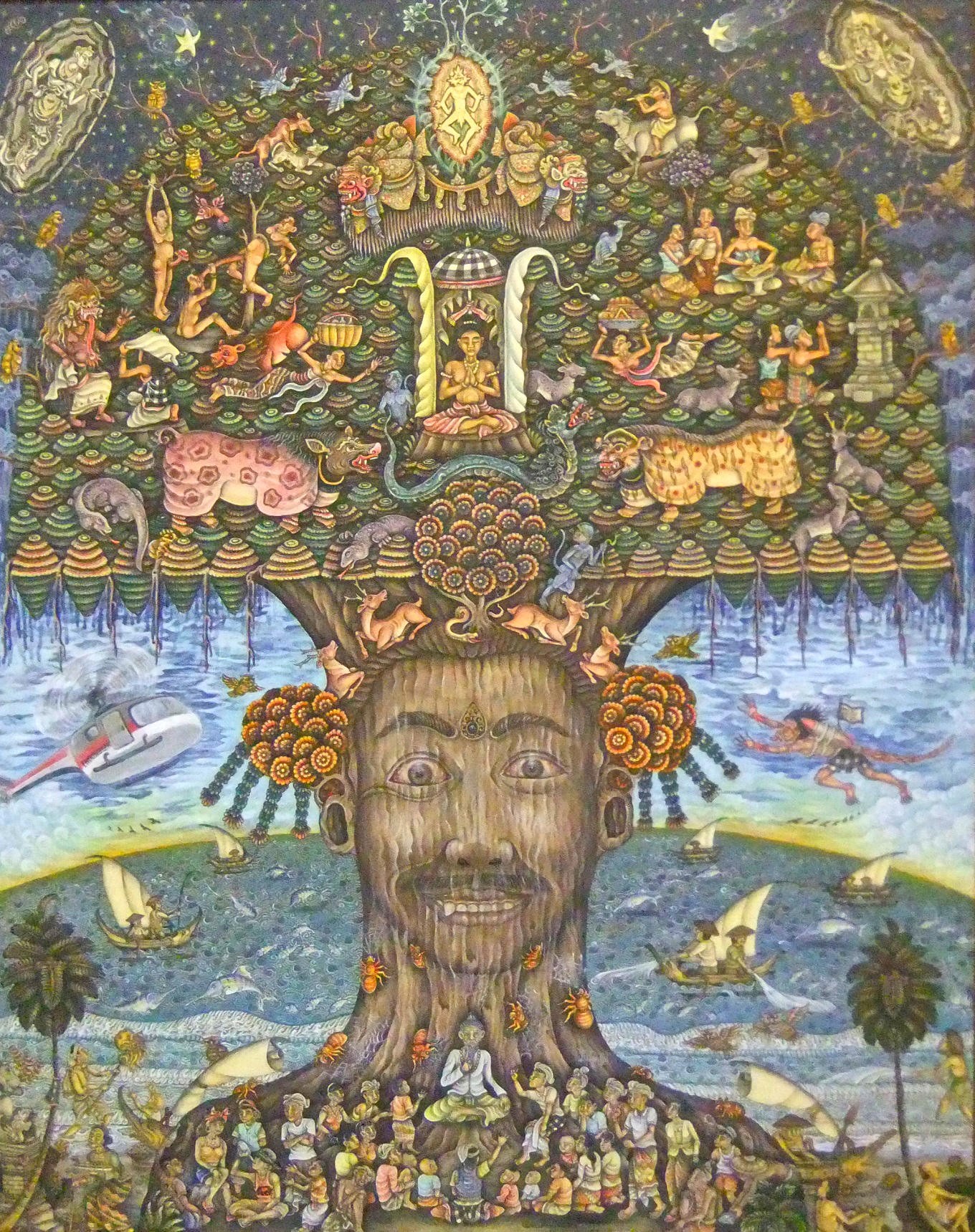 'Not For Sale – Tangis Amarah Pulau Kecil Baris' by I Wayan Aris Sarmanta.(JP/Richard Horstman)
'Not For Sale – Tangis Amarah Pulau Kecil Baris' by I Wayan Aris Sarmanta.(JP/Richard Horstman)
Pohon Kehidupan (Tree of Life), a detailed execution of a traditional work with his modern conceptual adaptations, is divided into two equal halves, symbolizing both the earthly and heavenly realms. It emphasizes local philosophies that highlight duality, and that life is a complex inter-relationship between positive and negative forces. Visual and philosophical equilibrium is beautifully achieved in this composition that reveals the core principle of Balinese traditional aesthetics — balance and harmony — and fundamentals to the Balinese way of life. The painting took one year to complete.
Not For Sale – Tangis Amarah Pulau Kecil Baris (Not For Sale — The Cries of Anger of a Small Island Chain) 2016 reveals the dilemma of tradition meeting with modernity, and the island’s natural environment and culture being threatened by development. It features a Balinese boy warrior (the Baris dancer) expressing both sadness and anger; his headdress depicts a scene of traditional Bali, while an emblem upon his chest reads “Sold Out.”
In the foreground, two small figures stand in opposition: one a Balinese man with a sign stating “Not For Sale,” the other a satirical character representing a businessman in a suit-and-tie holding a briefcase, complete with the facial features of a rat.
During his youth, Sarmanta was trained by his grandfather I Wayan Regug, a member of the famous 1930s Ubud-based association Pita Maha. In recent years, however, Sarmanta has been a “beneficiary” of the new Baturlangan Artists Collective of Batuan. Defining the new model of Balinese collectives that are contributing to the current era of renewal of traditional art, Baturlangan’s strong leadership style has a clear vision and mission. This is not only windfall for its members, like Sarmanta, but also for the future generations through its program of regular workshops for school children.
Bulan Cinta (Moon Lovers) 2016, reveals Sarmanta’s confidence in exposing his intimate side. Imagination fuses with memories of personal love experiences in a composition depicting heaven and earth, and featuring two young lovers floating about in various romantic situations. Planets, stars and asteroids, along with objects that combine traditional iconography fill the cosmic scene, while metallic colors truly bring the painting to life.
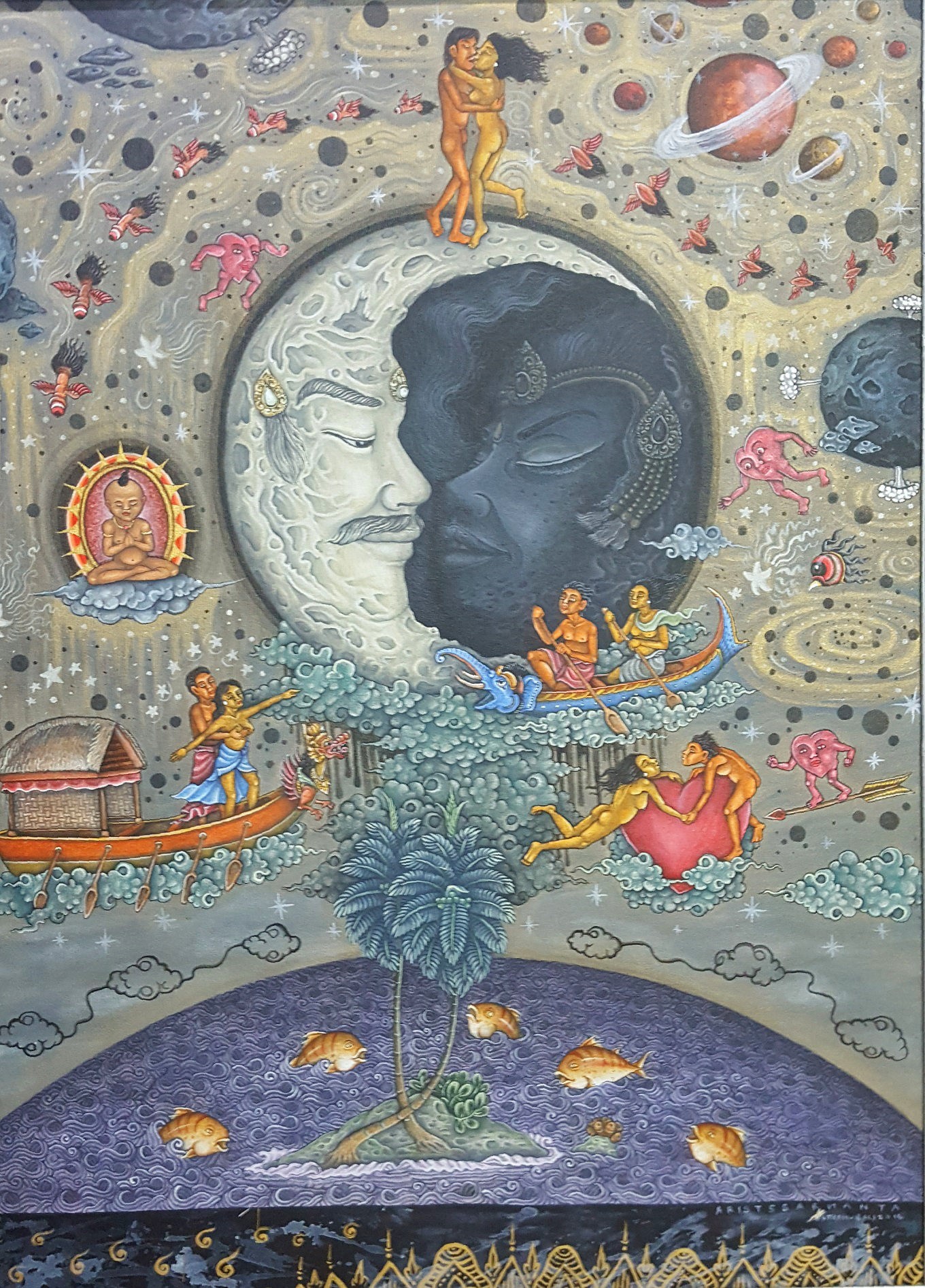 'Bulan Cinta' (Moon Lovers) by I Wayan Aris Sarmanta.(JP/Richard Horstman)
'Bulan Cinta' (Moon Lovers) by I Wayan Aris Sarmanta.(JP/Richard Horstman)
Although young, Sarmanta has developed a strong social conscience. He cites social media as a powerful tool that keeps him informed of important local and global events that impact the current social and political landscape. Tapak Dara – Unity/ Tapak Dara – Pilar Kebangsaan (Virgin Footprints — Unity/Virgin Footprints — National Pillar) 2017, is a landmark work that reveals the extent of the artist’s awareness, along with his ability to pour his feelings into a composition that is relevant to all Indonesians.
 'Tapak Dara – Unity/ Tapak Dara – Pilar Kebangsaan' by I Wayan Aris Sarmanta.(JP/Richard Horstman)
'Tapak Dara – Unity/ Tapak Dara – Pilar Kebangsaan' by I Wayan Aris Sarmanta.(JP/Richard Horstman)
Upon a brown background, a large white plus sign is the prominent visual structure. It is the Balinese Hindu symbol for the spirit of unity, also of equilibrium, eternity and sustainability.
It signifies the four pillars upon which the Indonesian national motto of Bhinneka Tunggal Ika (Unity in Diversity) are founded. Sarmanta prompts us that the forefathers of the Republic of Indonesia (NKRI) have laid out four supporting concepts to create national unity, even though there is great diversity within the country.
Title: REBIRTH
Date: Continuing through July 15
Place: TITIañ Art Space, Jl. Bisma, Ubud, Bali
Opening hours: 10 a.m. – 7 p.m.
Contact: +62 822-14-400-200
---------------
Interested in writing for thejakartapost.com? We are looking for information and opinions from experts in a variety of fields or others with appropriate writing skills. The content must be original on the following topics: lifestyle ( beauty, fashion, food ), entertainment, science & technology, health, parenting, social media, travel, and sports. Send your piece to community@jakpost.com. For more information click here.

